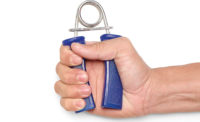Hand Protection
“Hand hygiene saves lives,” exclaims the slogan on the Centers for Disease Control and Prevention (CDC) Hand Hygiene in Healthcare Settings Web site — http://www.cdc.gov/handhygiene/.
But like many safety slogans, this one too is often ignored. “Adherence to hand hygiene recommendations is unacceptably low, usually well below 50 percent,” reported a 2004 article in the Annals of Internal Medicine.
The CDC’s 2002 guidelines are clear and straightforward, involving few steps, and should promote widespread acceptance and compliance. Especially considering the risks that are well-established, infections unintentionally acquired by patients during hospital stays (nonsocomial infections) occur far too frequently, and can be deadly.
If 10 percent of all hospital-acquired infections involve the bloodstream, 87,500, 175,000 or 350,000 patients acquire these life-threatening infections each year. Anywhere from 17,500 to 70,000 patients die each year due to these bloodstream infections, according to various estimates.
You know better than that. Even when the employee’s own life, or the lives of coworkers, can be saved by PPE compliance and adherence to guidelines, people don’t always follow directions and act like we think they would.Why?
Here is a synopsis of the CDC’s recommendations to physicians and other healthcare providers:
Researchers for the article observed 163 physicians during 573 patient-care episodes, which provided 887 opportunities for hand hygiene. Here’s what they found:
This is a situation common to many safety pros: You have employees who are aware of risks, are well-intentioned when it comes to following safety guidelines, and say they are motivated to do a safer job. So why are only slightly more than half of these particular employees studied (physicians) behaving according to safety norms?
Only 44 percent of physicians in the study considered themselves possible role models for good hand hygiene practices. According to the article — and as many a safety pro will attest — the role model could play a pivotal role in changing human behavior.
In your workplace, how many of your employees are role models for wearing gloves, hearing protection, eye protection, and so on? When time pressures and workloads are barriers against PPE compliance, role modeling can be a strong, positive activator for safety.
But like many safety slogans, this one too is often ignored. “Adherence to hand hygiene recommendations is unacceptably low, usually well below 50 percent,” reported a 2004 article in the Annals of Internal Medicine.
The CDC’s 2002 guidelines are clear and straightforward, involving few steps, and should promote widespread acceptance and compliance. Especially considering the risks that are well-established, infections unintentionally acquired by patients during hospital stays (nonsocomial infections) occur far too frequently, and can be deadly.
Sobering statistics
CDC estimates if 35 million patients are admitted each year to the approximately 7,000 acute-care institutions in the United States, the number of nosocomial infections — assuming overall attack rates of 2.5 percent (2.5 infections per 100,000 patient days), 5 percent, or 10 percent — would be 875,000, 1.75 million, or 3.5 million, respectively.If 10 percent of all hospital-acquired infections involve the bloodstream, 87,500, 175,000 or 350,000 patients acquire these life-threatening infections each year. Anywhere from 17,500 to 70,000 patients die each year due to these bloodstream infections, according to various estimates.
Compliance riddle
If your employees knew that following certain personal protective equipment and personal hygiene guidelines could prevent untold illnesses and deaths to innocent people, wouldn’t compliance be easy?You know better than that. Even when the employee’s own life, or the lives of coworkers, can be saved by PPE compliance and adherence to guidelines, people don’t always follow directions and act like we think they would.Why?
Lessons in hand hygiene
Perhaps there are lessons in compliance and human nature that pertain to hand protection and wearing gloves, and other types of PPE, to be learned from an article, “Hand Hygiene among Physicians: Performance, Beliefs, and Perceptions,” published in the Annals of Internal Medicine in 2004.Here is a synopsis of the CDC’s recommendations to physicians and other healthcare providers:
- When healthcare personnel’s hands are visibly soiled, they should wash with soap and water.
- The use of gloves does not eliminate the need for hand hygiene. Likewise, the use of hand hygiene does not eliminate the need for gloves.
- Gloves reduce hand contamination by 70 percent to 80 percent, prevent cross-contamination and protect patients and healthcare personnel from infection.
- Handrubs should be used before and after each patient just as gloves should be changed before and after each patient.
Researchers for the article observed 163 physicians during 573 patient-care episodes, which provided 887 opportunities for hand hygiene. Here’s what they found:
Research findings
- Overall adherence to hand hygiene guidelines was 57 percent. Adherence was significantly higher when a handrub solution was easily accessible. (This could suggest something about the placement and accessibility of your PPE.)
- Most physicians reported that they were aware of the risk of infection to the patient resulting from nonadherence (85 percent), that they intended to adhere to guidelines (77 percent), and were motivated to improve their adherence level (74 percent).
This is a situation common to many safety pros: You have employees who are aware of risks, are well-intentioned when it comes to following safety guidelines, and say they are motivated to do a safer job. So why are only slightly more than half of these particular employees studied (physicians) behaving according to safety norms?
Cultural barriers
System and cultural influences affect compliance, according to the article. For example, a high workload and fast work pace was associated with nonadherence by physicians. If handrubs were not conveniently accessible, usage declined. Junior staff and students who were taught to handwash abandoned their habit when others, especially more senior staff, did not bother.Only 44 percent of physicians in the study considered themselves possible role models for good hand hygiene practices. According to the article — and as many a safety pro will attest — the role model could play a pivotal role in changing human behavior.
In your workplace, how many of your employees are role models for wearing gloves, hearing protection, eye protection, and so on? When time pressures and workloads are barriers against PPE compliance, role modeling can be a strong, positive activator for safety.
Looking for a reprint of this article?
From high-res PDFs to custom plaques, order your copy today!






